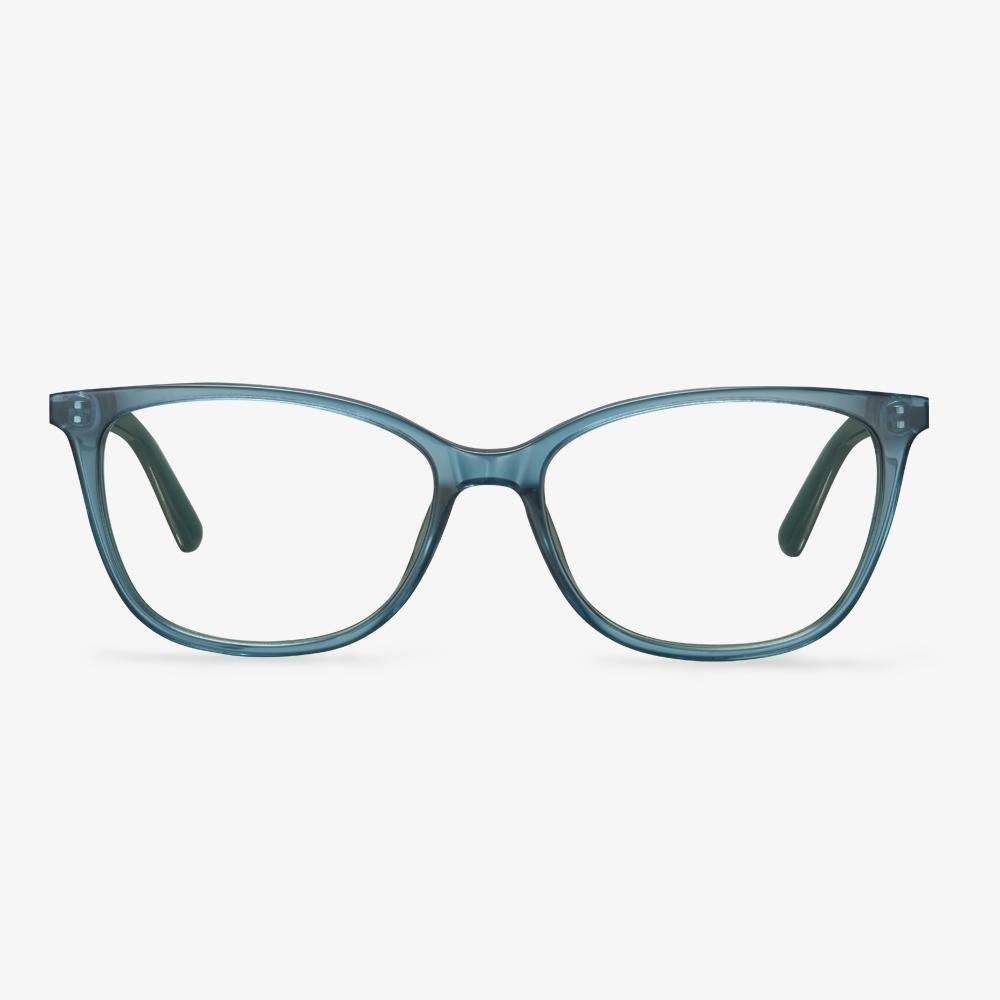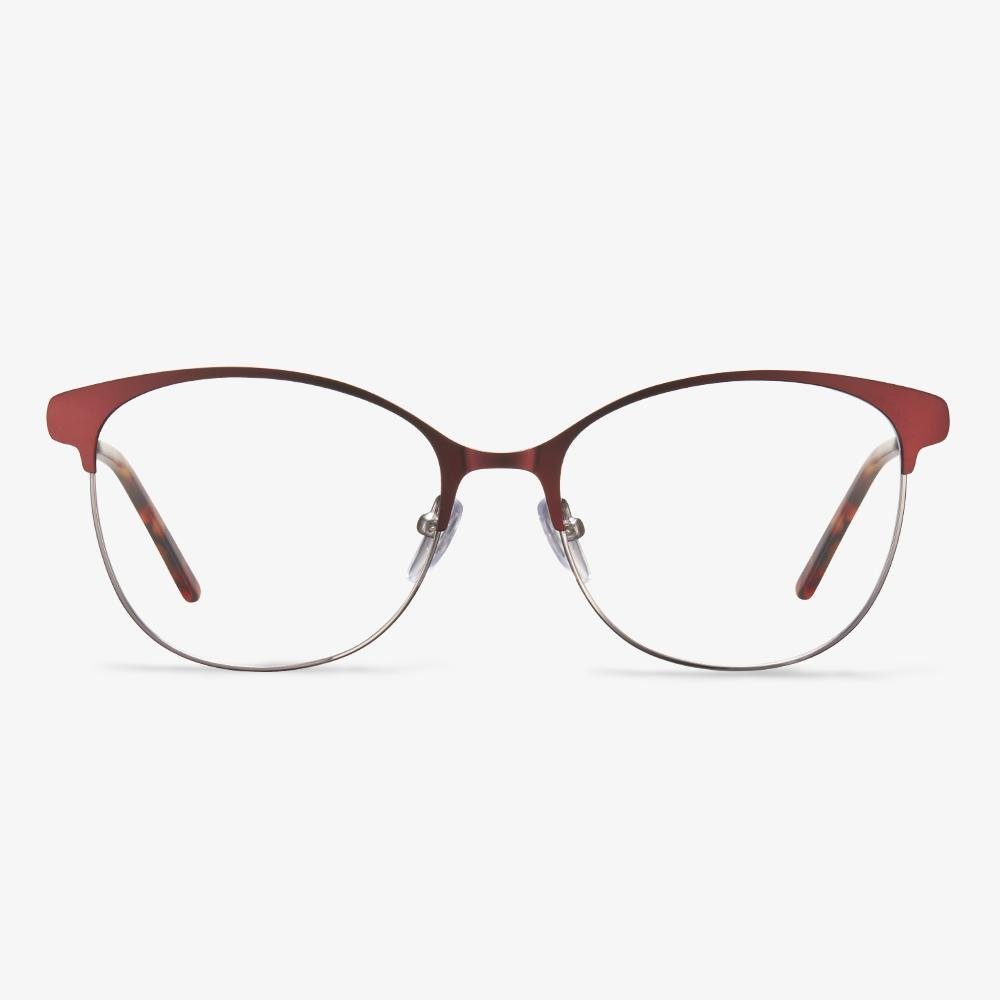Step-by-Step Glasses Size Guide
In this section, we will show you how to perform glasses measurements. But the first thing is to know what face shape you have. If you do not know, click here to have a check.
Then you need to know where to find the size measurement of your glasses. In general, you will find numbers that look like this 51-17-145 at the temples of your eyeglasses. Of course, these numbers come at different meanings.
The first number often refers to the lens width. Lens width is the horizontal diameter of the lens at its widest point. In optometry, another term is eye size.
The second number often means the bridge width. Bridge width is the part that joins the two lenses and sits over the nose. Some refer to this as the gap. The bridge width varies between 14 and 24 millimeters.
The third number often means the temple length. The temple is the arm that keeps the sunglasses on your face. That arm extends to the part that hangs on the ears. The length is usually 135, 140, or 145 millimeters.
Lens height measures the size of the lens vertically, that is from the top to the bottom of the lens. Although sizes may differ depending on the brand, the standard size is somewhere between 32 and 38 millimeters.
How do blue light glasses work?
Using anti-blue light lens film reflection technology, the glasses reflect harmful blue light, so the surface of the lens reflects blue light, and the substrate absorption technology of the anti-blue light lens will not reflect blue light. Anti-blue light glasses mainly reflect harmful blue light by coating on the surface of the lens, or absorb harmful blue light by adding anti-blue light factor into the substrate of the lens, to realize the blocking of harmful blue light. The blue light intensity emitted by the mobile phone screen was effectively suppressed by the use of anti-blue light glasses, compared with a portable spectrometer.
What Do the Numbers on Glasses Mean?
The first number on glasses frames is the eye size. It is the horizontal width of the lenses. In general, the number of eye sizes varies from 40 mm to 62 mm in most of the spectacle frames.
The second number is the bridge size. It is the distance between the lenses. Also, it is the bridge that rests upon your nose. Mostly, the size of the bridge on glasses frames would be from 14 mm to 24 mm.
The third number is the temple length. It is the length of the stems of the frame that rests upon your ears. It can be measured from hinge to the end tip of the temple. In general, the temple length in most cases is from 120 mm to 150 mm. The bridge and temple help the frame to comfortably fit on the face.
Meanwhile, if there are no numbers on glasses frames, do not worry. You can always measure your eyeglasses frame with a millimeter ruler. Sometimes, the tiny numbers are worn off or sometimes they are printed too small that you might have to use the magnifying glasses. If you have known the glasses numbers meaning, you can choose to measure them by yourself.
At the same time, to fit the glasses better, you can also choose to measure your face for glasses frames. After knowing the suitable size of glasses, you can choose to buy a pair of glasses online. Thus, Koalaeye Optical is recommended. It is an online glasses store and provides all kinds of glasses, sunglasses, and frames. What’s more, these glasses are stylish and cheap.
Refractive index of spectacle lens
It is generally believed that the higher the refractive index, the better the spectacle lens. Such spectacle lenses are relatively thin, and of course, the price is a bit expensive. When the refractive index increases, the direction of the light entering the lens will change greatly, the focus will move to the lens, the focal length will be smaller, and the diopter will become larger. In order to keep the diopter unchanged, it is necessary to reduce the curvature of the lens, that is, to reduce the curvature of the mirror surface, so that the thickness of the lens can be reduced. This is why the larger the refractive index, the thinner the lens is. Under the same premise of other things, the larger the refractive index, the thinner the lens, the lighter and more beautiful the lens, and the higher the price, but the larger the refractive index is not the better.
Method of taking off the contact lens
Wash your hands before removing contact lenses, and be careful not to leave long fingernails, to avoid contamination of the lenses by bacteria and nail scratches. Look up, open the upper and lower eyelids with the left index finger and right middle finger. Pinch the middle and lower edge of the lens gently with the thumb and index finger of the right hand, and remove the lens. You can use the index finger first to move the lens down, and then gently pinch the middle and lower edge of the lens with the thumb and index finger belly, and take off the lens.
What Is Trivex Lens?
Trivex is another light, impact-resistant eyeglasses lenses. Like polycarbonate lens, Trivex is an excellent lens material for safety applications and children’s eyewear.
Trivex lenses are made of a urethane-based monomer. They are produced using a slower, cast molding process similar to how regular plastic lenses are made. The liquid lens material is slowly baked until is set. This gives Trivex lenses the advantages of sharper optics than injection-molded polycarbonate lenses.
Aspheric lenses are different from spherical lenses.
Spherical lenses: The higher the strength of spherical lenses, the worse the visual experience, because the spherical lenses do not eliminate aberrations. Aspheric lens: it can greatly reduce the deformation of things and make people see more clearly and vividly. Besides, the eyes are not easy to get tired and the appearance is beautiful. It reduces the aberration of the lens and ensures a clearer field of vision.
When the parameters of the lens are normal, the optical center of the myopic lens is the clearest, and the peripheral part of the lens will be slightly deformed. So now the lens is designed with an aspheric surface. Under normal circumstances, the mainstream aspheric lens in the market has a reduced edge design, which is about 5 to degrees lower. The opposite edge of a spherical lens is higher.











































